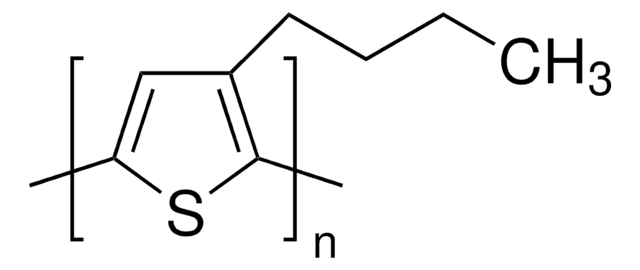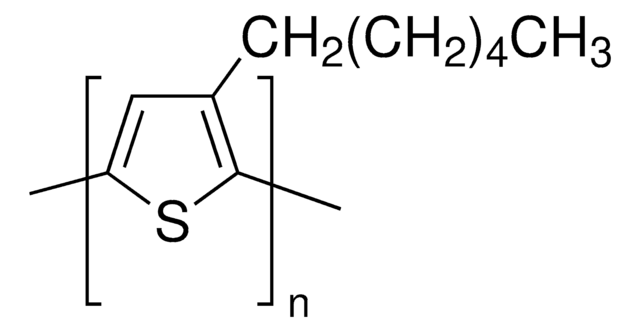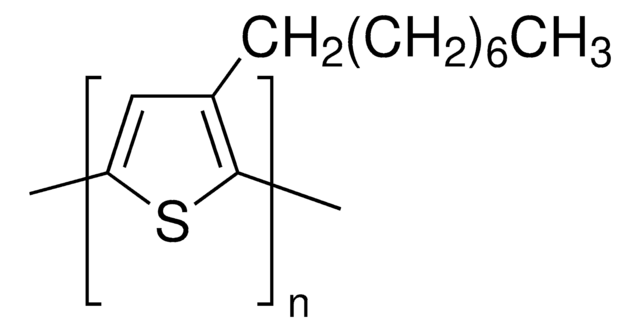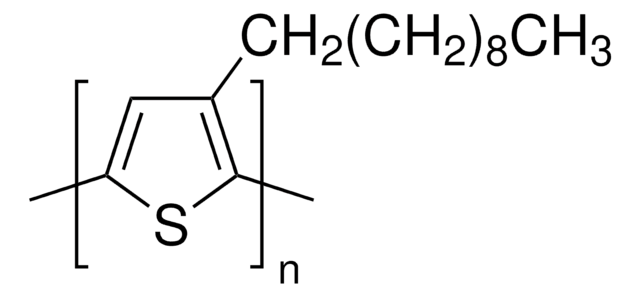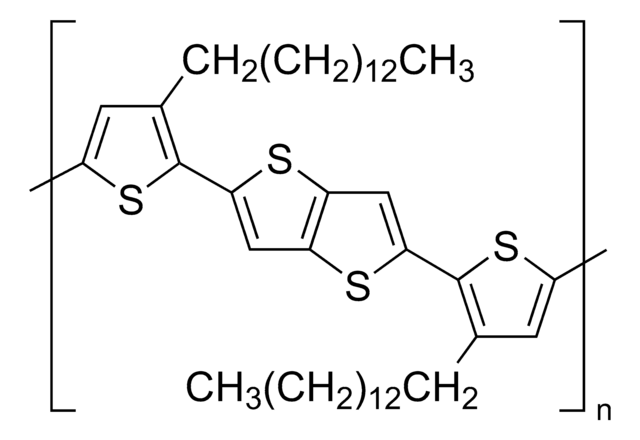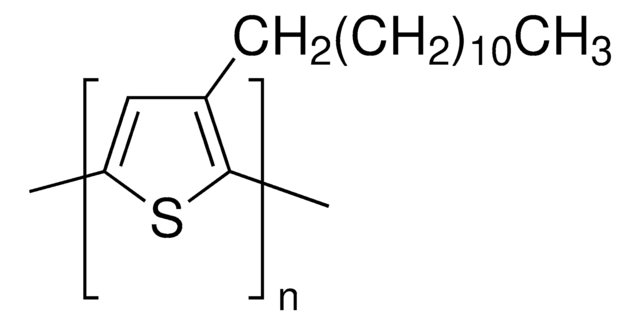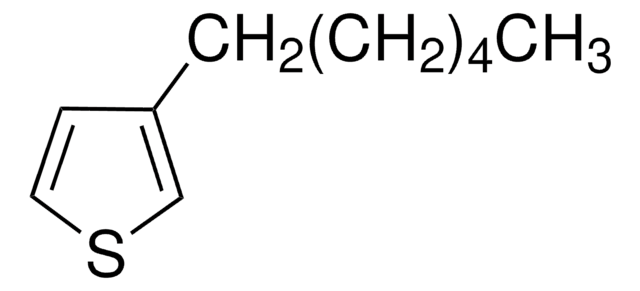682799
P3OT
regioregular, electronic grade, 99.995% trace metals basis, average Mn ~25,000
Synonym(s):
Poly(3-octylthiophene-2,5-diyl)
About This Item
Recommended Products
material
black
grade
electronic grade
description
Band gap: 1.7 eV
Assay
99.995% trace metals basis
form
solid
mol wt
average Mn ~25,000
mp
198-211 °C
Orbital energy
HOMO -5.25 eV
LUMO -3.55 eV
OPV Device Performance
ITO/PEDOT:PSS/P3OT:PC61BM (1:2)/LiF/Al
semiconductor properties
P-type (mobility=10−4 - 10−1 cm2/V·s)
General description
Application
Rechargeable battery electrodes, electrochromic devices, chemical and optical sensors, light-emitting diodes, microelectrical amplifiers, field-effect transistors and non-linear optical materials.
Used in organic field-effect transistors and in polymer-based solar cells.
Features and Benefits
Storage Class Code
11 - Combustible Solids
WGK
WGK 3
Flash Point(F)
Not applicable
Flash Point(C)
Not applicable
Personal Protective Equipment
Choose from one of the most recent versions:
Certificates of Analysis (COA)
Don't see the Right Version?
If you require a particular version, you can look up a specific certificate by the Lot or Batch number.
Already Own This Product?
Find documentation for the products that you have recently purchased in the Document Library.
Customers Also Viewed
Articles
We are pleased to offer these conjugated polymer semiconductors: p- and n-type Polymer Semiconductors.
The soaring global demand for energy has created an urgent need for new energy sources that are both cost-competitive and eco-friendly.
The application of conducting polymers at the interface with biology is an exciting new trend in organic electronics research.
Optoelectronic Devices Based on Diketopyrrolopyrrole (DPP)-containing Conjugated Small Molecules
Our team of scientists has experience in all areas of research including Life Science, Material Science, Chemical Synthesis, Chromatography, Analytical and many others.
Contact Technical Service